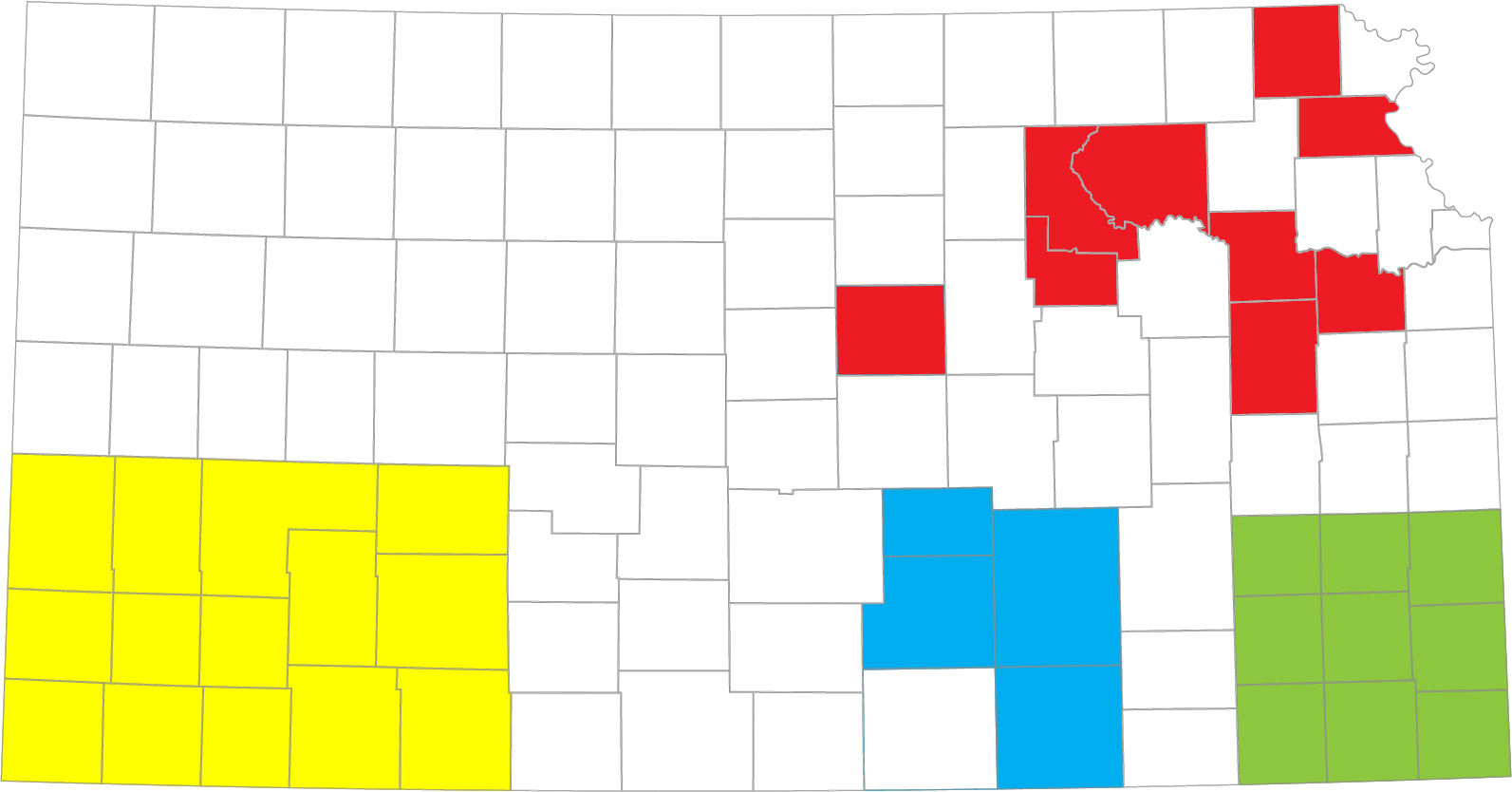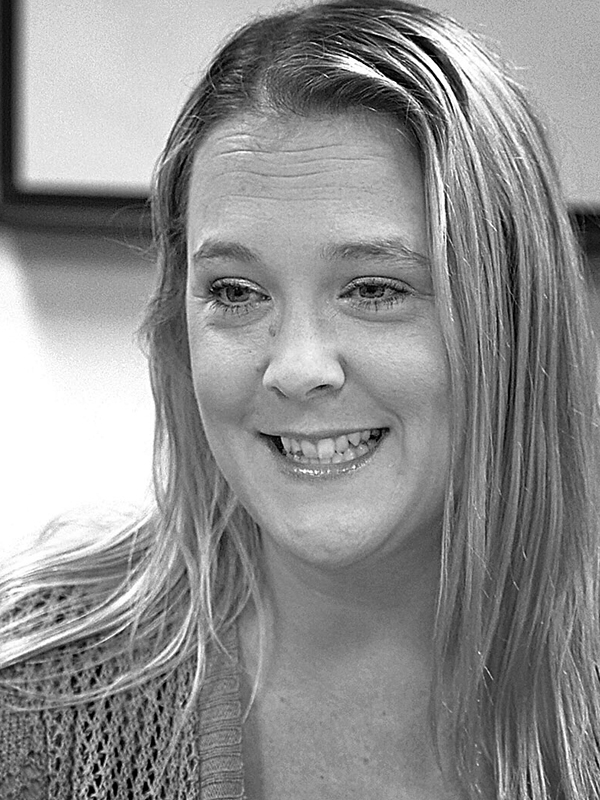Southeast
“I’ve had a lot of proud moments. All the hard work has paid off. It’s been very exciting.”
Generating Opportunities to Attain Lifelong Success
GOALS put Kansans on the path to successful careers that enhanced their sense of value to themselves, their families, and communities.GOALS was a three-year pilot program funded by the United States Department of Agriculture (USDA) and administered by the Kansas Department for Children and Families (DCF). GOALS was a part of a national effort to test innovative approaches to employment and training programs for Supplemental Nutrition Assistance Program (SNAP) participants.

Northeast Region 2016-2018 Statistics*
COUNTIES: Atchison, Brown, Douglas, Geary, Osage, Pottawatomie, Riley, Saline, Shawnee
POPULATION: 529,885
GOALS PARTICIPANTS: 984
SNAP PARTICIPANTS: 38,706
Home to three major universities, a large military base, the state capitol, and urban and rural communities, the northeast region proved to be a unique environment in which to test the GOALS pilot.
The primary GOALS training partners in the region included Highland Community College, the Dwayne Peaslee Technical Training Center, and Washburn Institute of Technology. Other key partners included Bert Nash Community Mental Health Center, Heartland Regional Alcohol & Drug Assessment Center (RADAC), Kansas Works, HealthSource Integrated Solutions, and Circles of Greater Topeka.
*Total population taken from 2016 (start of pilot participation) census estimate. Pilot participants taken as the total for the 2 year enrollment period. SNAP Recipient totals taken from most recently available month December 2018.
South Central Region 2016-2018 Statistics*
COUNTIES: Butler, Cowley, Harvey, Sedgwick
POPULATION: 651,700
GOALS PARTICIPANTS: 1,921
SNAP PARTICIPANTS: 64,682
The south central region offered GOALS participants a wealth of employment options, training opportunities, and wraparound support services. Most of the GOALS participants lived in Wichita, the state’s largest city, but the region also served those in rural communities and small towns.
The region included one state university and two private universities, an Airforce base, a state prison, and 29 aircraft manufacturing companies. Four DCF offices provided support in this region, which had the highest concentration of providers and training classes available to GOALS participants.
*Total population taken from 2016 (start of pilot participation) census estimate. Pilot participants taken as the total for the 2 year enrollment period. SNAP Recipient totals taken from most recently available month December 2018.
Southwest Region 2016-2018 Statistics*
COUNTIES: Clark, Finney, Ford, Grant, Gray, Hamilton, Haskell, Hodgeman, Kearny, Meade, Morton, Stanton, Stevens, Seward
POPULATION: 139,207
GOALS PARTICIPANTS: 636
SNAP RECIPIENTS: 8,556
This sparsely populated rural region included small towns and farming communities. Four meat processing plants provided numerous job opportunities, as did local stock yards, community colleges, city maintenance, and services positions. The region was served by three DCF offices. Collaboration with Garden City Community College helped the GOALS program offer Bridges and Partners 4 Success classes on a regular basis. When Garden City Community College lost its instructor for these classes, DCF offered Bridges at its three offices, with continued success.
The GOALS pilot was built upon the foundation of a previous collaboration in this region between DCF and the USDA Food Safety and Inspection Services (FSIS). DCF and FSIS had successfully worked together to fill federal meat processing plant inspector positions.
*Total population taken from 2016 (start of pilot participation) census estimate. Pilot participants taken as the total for the 2 year enrollment period. SNAP Recipient totals taken from most recently available month December 2018.
Southeast Region2016-2018 Statistics*
COUNTIES: Allen, Bourbon, Cherokee, Crawford, Labette, Montgomery, Neosho, Wilson, Woodson
POPULATION: 169,690
GOALS PARTICIPANTS: 627
SNAP PARTICIPANTS: 19,336
This region has become an industrial and manufacturing hub, with a demand for employees with skills in welding, plumbing, and heavy equipment manufacturing. As a result, employers and community employment consortiums were highly engaged when GOALS provided basic training through Southeast Kansas Career and Technical Education Center (CTEC) and Labette Community College.
Partners and employers were very active in the collective impact process. One of the GOALS partners, Neosho County Community College, developed the Bridges program, which was used as the basis for the statewide GOALS model.
*Total population taken from 2016 (start of pilot participation) census estimate. Pilot participants taken as the total for the 2 year enrollment period. SNAP Recipient totals taken from most recently available month December 2018.
No country, however rich, can afford the waste of its human resources. Demoralization caused by vast unemployment is our greatest extravagance. Morally, it is the greatest menace to our social order.
Franklin Delano Roosevelt


Funding provided by the United States Department of Agriculture (USDA). The GOALS program is administered through the Kansas Department for Children and Families (DCF). The USDA and DCF are equal opportunity employers and providers.




